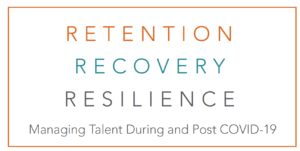 The recovery of Canada’s tourism workforce requires rapid deployment of resources and a comprehensive engagement strategy that involves all stakeholders. Tourism HR Canada, with a mandate to facilitate, coordinate, and enable human resource development activities which support a globally competitive and sustainable industry and foster the development of a dynamic and resilient workforce, is poised to take the lead on workforce recovery strategies.
The recovery of Canada’s tourism workforce requires rapid deployment of resources and a comprehensive engagement strategy that involves all stakeholders. Tourism HR Canada, with a mandate to facilitate, coordinate, and enable human resource development activities which support a globally competitive and sustainable industry and foster the development of a dynamic and resilient workforce, is poised to take the lead on workforce recovery strategies.
With tourism businesses starting to reopen, many need clarity in understanding how to proceed, particularly with physical distancing requirements and maintaining the health and safety of workers and customers. Anxiety stems from not knowing the rules and the difficulty in finding guidance from government and public health officials (and the fact that the rules or requirements are routinely changing). There are other workforce/staffing concerns, like anticipating how many and how quickly workers are required, the type of training needed, and whether the business can procure the necessary health and safety supplies now necessary to operate (e.g., gloves, masks, hand sanitizer, plexiglass shields, special signage).
Recovering from a pandemic is well beyond the experience of most business owners. Knowing how to adapt to the impacts of the virus is difficult; there are many unknown variables and the situation is complex. Many have a feeling of uncertainty and seek guidance.
In building our comprehensive online recovery toolkit and resource for tourism businesses, we discovered various sources of information on workforce recovery during and following a crisis. These include recent recovery plans from the World Tourism Organization, provincial governments, and businesses, as well as guidance material produced from many industry associations.
This review led to ten priority recommendations aimed at helping the tourism sector rebound by ensuring it has a post-COVID-ready workforce.
The following are a summary of these recommendations. For the full white paper, please click here.
- Practical, explicit guidelines
- Refer industry to authoritative resources that are maintained, many of which are sector specific.
- Work with government and health authorities to inform, design, and implement further guidelines that will work for tourism operators.
- Flexible, back-to-work employment insurance scheme
- Work with government to look at employment insurance programs or policies that will be responsive to the unique issues facing tourism, especially because of the gradual recovery period.
- Skills training focused on new service and workplace requirements
- Promote newly created Tourism Workforce Recovery Toolkit (funded, in part, by the Government of Canada, and made available free of charge) and seek additional resources to expand on the products and services (resources) offered in response to emergent needs.
- Continue to offer and promote the comprehensive list of Emerit online training courses at no cost. Seek funding to further expand content and delivery format options, as needed.
- Overhauled workforce plans: a post-COVID people strategy
- Provide tools and support to help employers develop post-COVID workforce strategies.
- Monitor anticipated changes to labour codes and other regulations that impact workforce practices and inform the sector of these changes.
- Community labour force development plans and a pan-Canadian tourism labour market strategy
- Develop and implement a framework for community labour force development planning.
- Work with the federal and provincial governments, national associations, and other key stakeholders to develop a comprehensive tourism sector labour force strategy that complements the Government of Canada’s (i.e., Destination Canada) tourism marketing and growth strategy.
- Tourism job retention and job growth strategy: marketing tourism as a destination for employment
- Seek government support to revive Discover Tourism as a key vehicle to drive a tourism job retention and job growth strategy.
- Equip Tourism HR Canada, national tourism associations, provincial and territorial industry associations, and Destination Canada with a common campaign to promote viable careers in tourism while reinforcing messages on safe travel and good service standards.
- Newly aligned business and service strategies
- Provide tools and support to help employers develop new business models and learn to access resources or other supports to refit their operations.
- Work with governments to seek programs and policies that take into consideration the unique business recovery issues faced by tourism operators.
- Tailored strategies for targeted populations
- Develop workforce strategies that will help increase labour force participation of under-represented groups, i.e., Indigenous peoples, new Canadians, international students.
- Work with colleges and universities to augment or support needs of the future tourism workforce, by offering access to Emerit online learning and joint credentials and promoting these graduates as job ready for quick deployment to the sector.
- Labour market data to inform policy and program decisions
- Tourism HR Canada continues to study the impacts of COVID-19 on the tourism workforce and disseminate timely, comprehensive information and analysis to help inform policy and program decisions.
- Tourism HR Canada seeks the renewed agreement with the Government of Canada, with broad support from tourism stakeholders, for the continuation of the Foundational Tourism Labour Market Research mandate.
- Credential passport: improving on worker and learner mobility
- Invest in future proofing the tourism workforce by introducing a universal competency credential, which builds on the Future Skills Framework and fosters an inclusive, more resilient and mobile workforce that can quickly adjust to new workforce demands.
